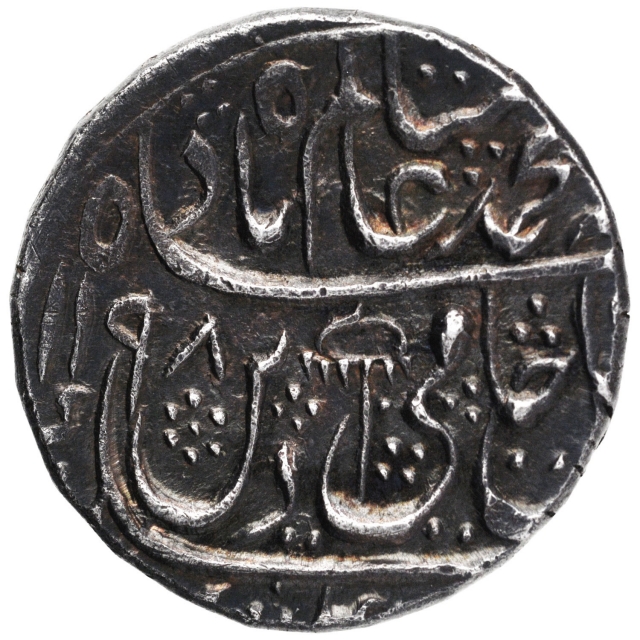This Lot is closed.
- P-Auction # 34
- Bids: 1
- Views:332
| Start Price 80000 | Estimated Price 80000-90000 |
| login, to view Hammer value | |
| Quick Description | ||||
|---|---|---|---|---|
| Denomination | Rupee 01 | Mint | Shergarh | |
| Metal | Silver | Year (AH/VS/SE/AM) | AH 1198 | |
| RY (Ruling Year) | 26 | |||
| Full Description: Shah Alam II, Shergarh Mint, Silver Rupee, AH 1198/26 RY, "Saya-e-fazle elah" Couplet, Obv: Persian legend Note: An extra word 'Allah' is visible in Persian as 'Seen'. Mahadji Sindhia was created as Vakil-al-Mutlaq on 3 Dec. 1784, near Halena a place about five miles north of Wer fort. The royal treasure and wealth were moved by Afrasiyab Khan (the last Mir Bakhshi) to Aligarh, his personal Jagir. Afrasiyab had placed the fort of Dig, and the lands appertaining to it, in charge of Malik Muhammad Khan. His garrison on being paid their arrears by Mahadji, evacuated the fort of Dig on 16 January 1785 and he occupied it with his own troops under Devji Patil. Here Mahadji had to stop for two months because of the fight for Agra, which surrendered on 27 March 1785. The next step was to gain the Aligarh fort.In order to be nearer to this place, Sindhia marched up the river to Mathura (arrived 11 April 1785). At this holy city, and later at Shergarh, about 25 Km north of Mathura, presently known as Shergarh Bangar. Sindhia was camped at Shergarh from around 27 November 1785 to c. 10th January 1786, when he embarked on the Jaipur campaign. It shows that the concerned rupee may have been struck at Shergarh, but not by Sindhia. It must have been struck while the Afrasiyab’s family was in possession of Dig. Shergarh was a place where the Yamuna could be crossed. It must have been the connecting road between Dig and Aligarh. That must also be the reason, for Sindhia when he moved to Shergarh for the capture of Aligarh. Therefore the most likely candidate who was responsible for striking this coin could be Malik Muhammad Khan, who was in charge of the Dig fort, or by Jahangir Khan who was in charge at Aligarh and perhaps more powerful than Malik Muhammad by being Afrasiyab's brother. However the link with Dig is likelytrue, as the ‘star’-like symbol to the left of the regnal year is a mark frequently found on the rupees from Dig. | ||||








